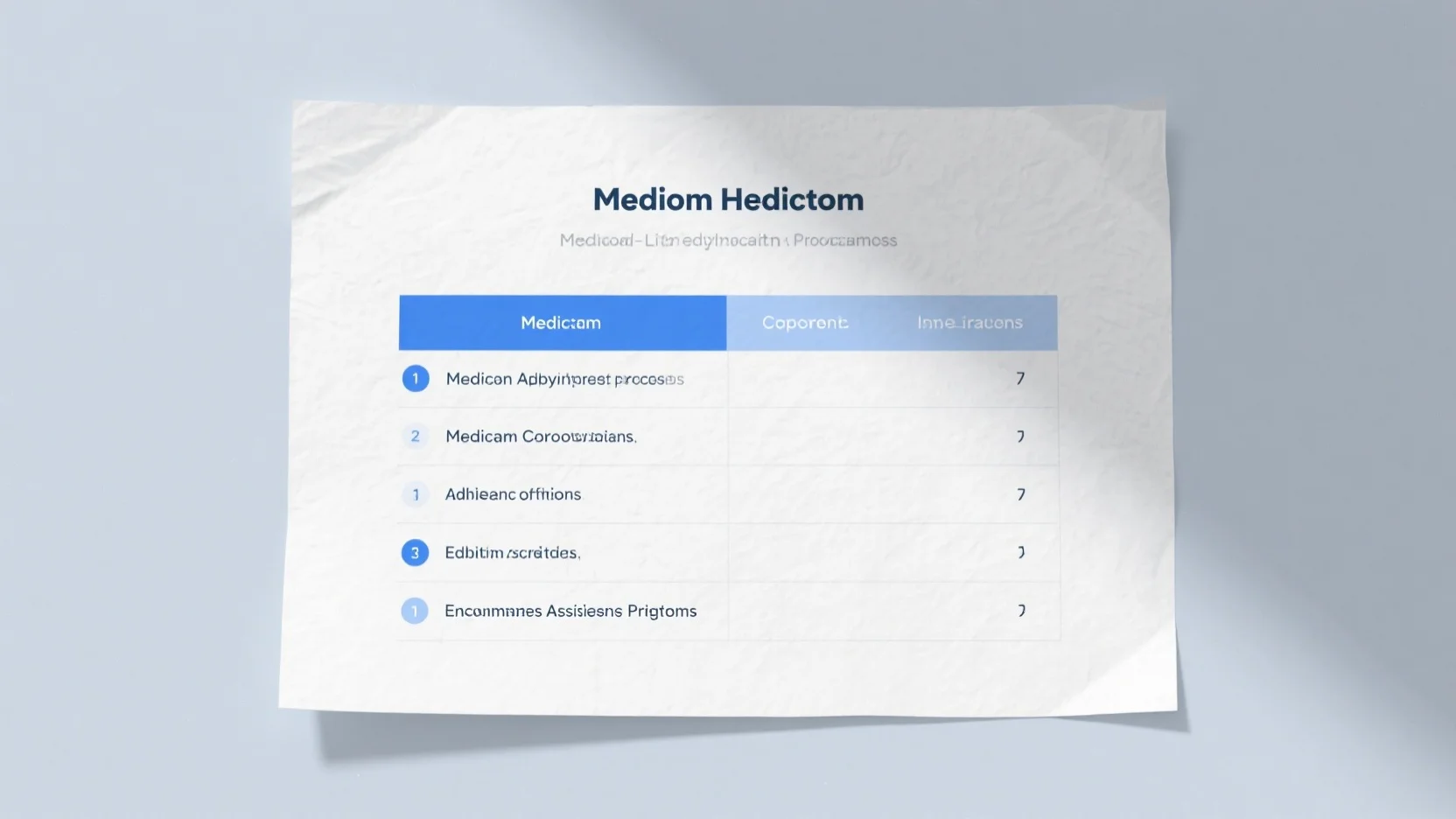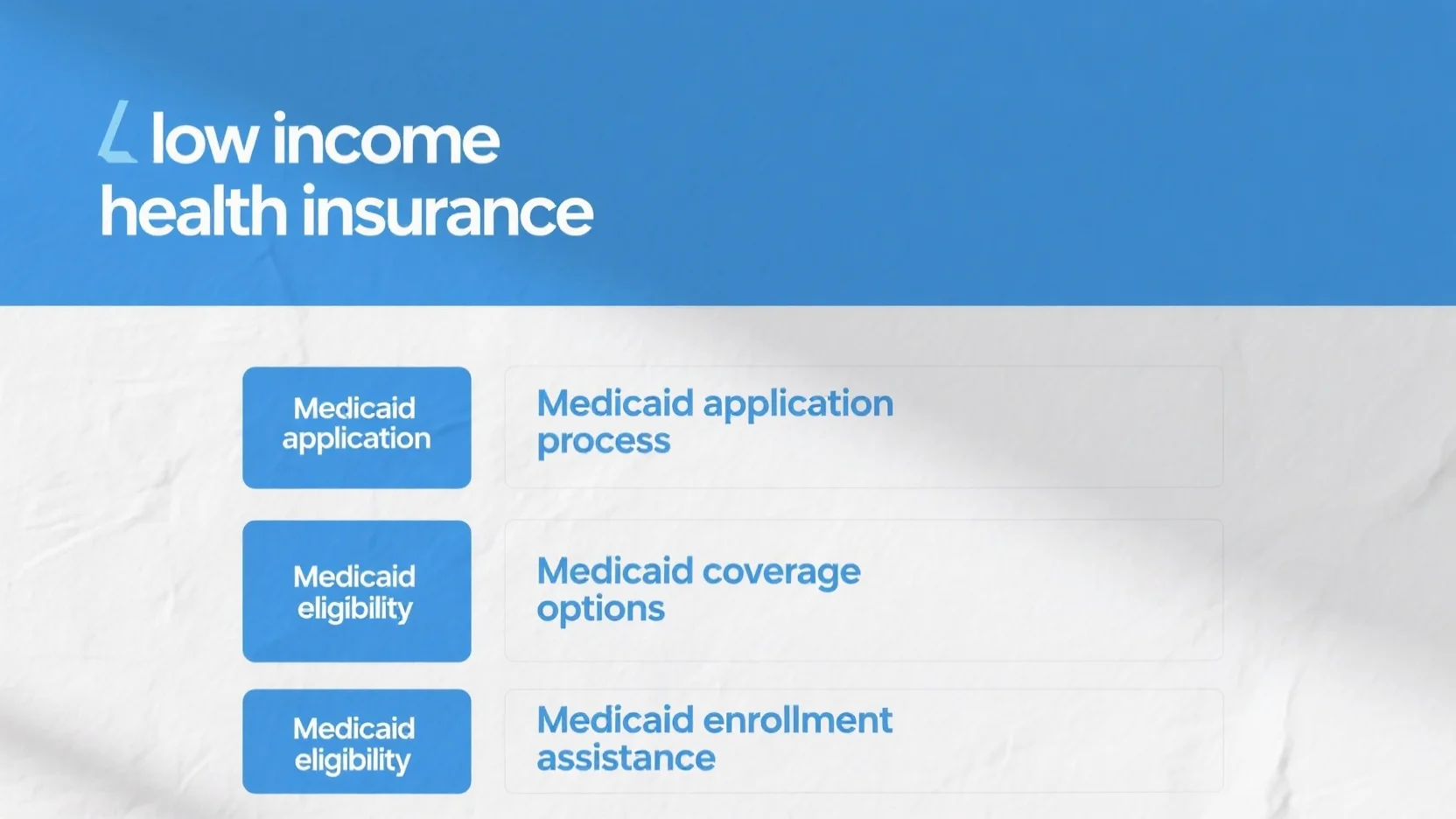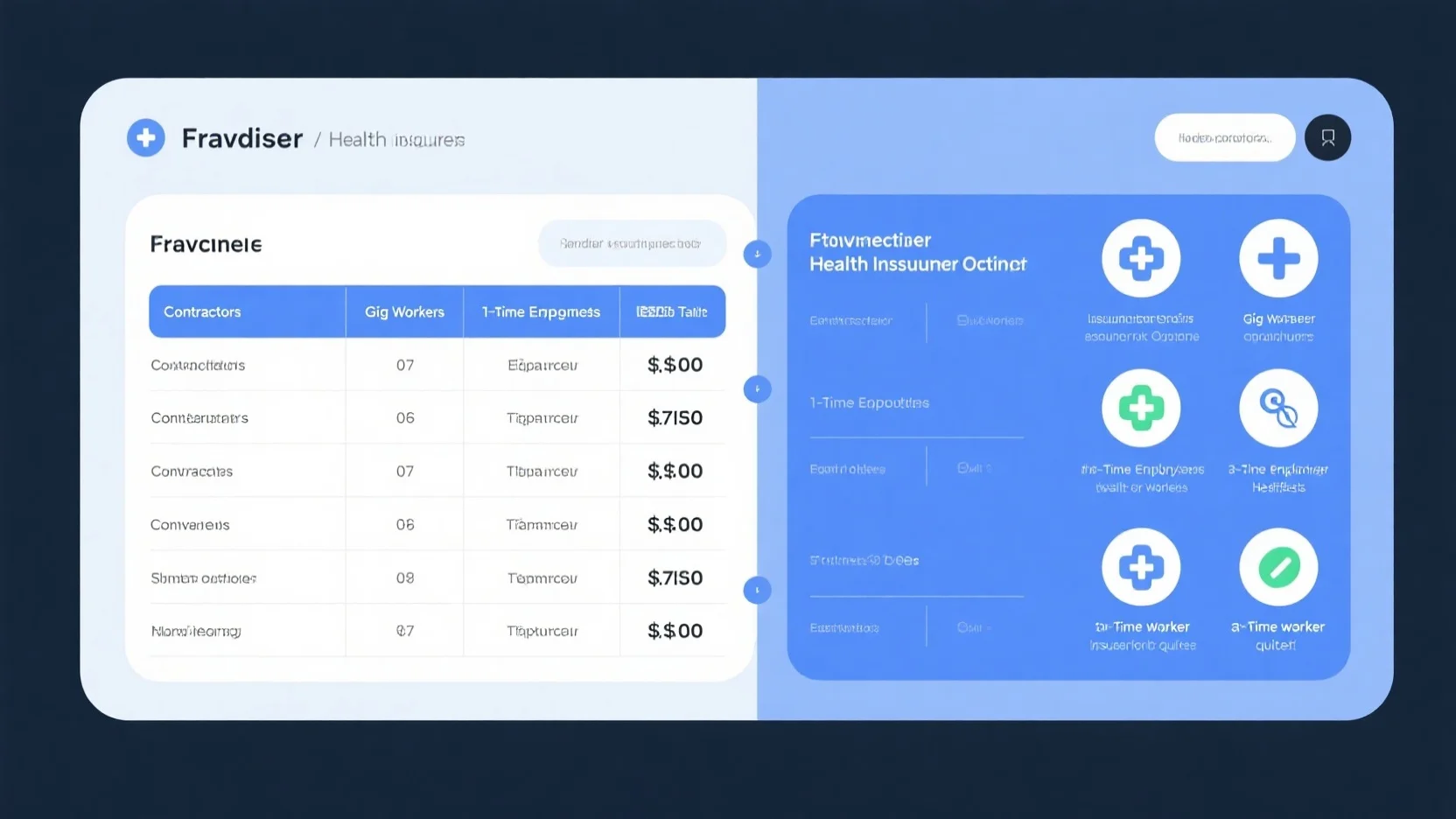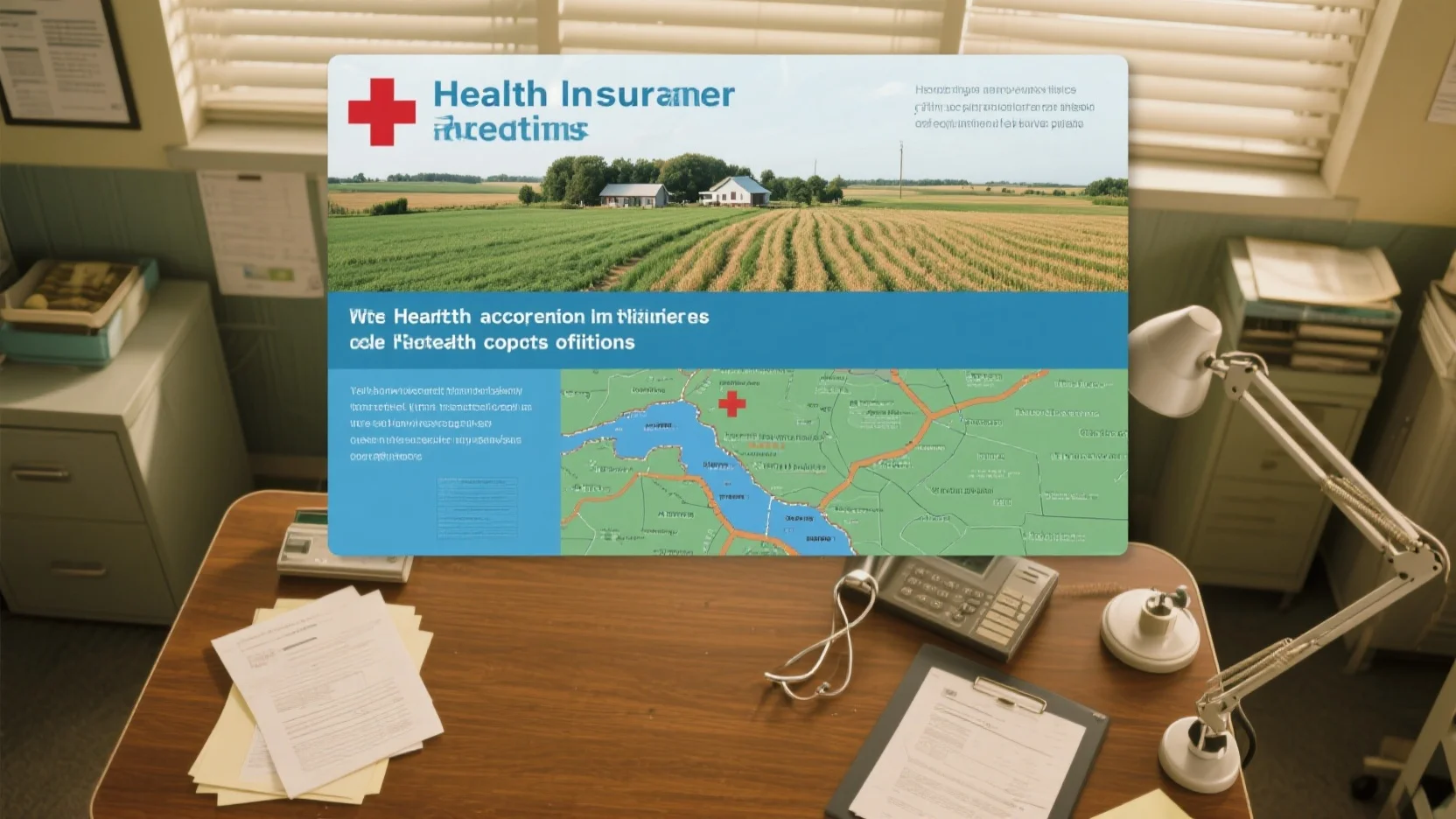As of 2024, over 90 million Americans rely on Medicaid for low – income health insurance (KFF). If you’re looking for comprehensive coverage at an affordable cost, this buying guide is for you. Compare premium Medicaid coverage options with counterfeit or insufficient alternatives. Eligibility varies widely by state, and factors like income, residency, and household size matter (SEMrush 2023 Study). Get the best price guarantee and free enrollment assistance when you follow our step – by – step guide. Act now to secure essential healthcare coverage.
Medicaid Eligibility
As of 2024, Medicaid serves over 90 million Americans, yet there is substantial variation in its eligibility criteria across states (KFF). Understanding these criteria is crucial for anyone seeking low – income health insurance.
General Eligibility Criteria
Factors (Income, Category, Residency, Household Size)
Income is a primary factor in determining Medicaid eligibility. The federal government sets income limits, but states have the flexibility to adjust them. For example, in states that expanded Medicaid under the Affordable Care Act, the income limit for adults is often set at 138% of the federal poverty level (SEMrush 2023 Study). Category refers to the specific group an applicant belongs to, such as children, parents, pregnant people, etc. Residency is also a key requirement; applicants must be legal residents of the state in which they are applying. Household size is taken into account when calculating income limits, as larger households can generally have higher incomes and still be eligible.
Pro Tip: Before applying for Medicaid, gather all your financial documents, including pay stubs, tax returns, and utility bills. This will help you accurately determine your income and complete the application process smoothly.
Covered Groups (Children, Parents, Pregnant People, Elderly, Disabled)
Medicaid provides coverage for various groups. Children are often eligible at higher income levels compared to adults. In many states, children under a certain age (usually 18) can qualify for Medicaid or the Children’s Health Insurance Program (CHIP) even if their family’s income is relatively high. Parents can also be eligible if their income falls within the state – specific limits. Pregnant people are covered to ensure proper prenatal and postnatal care. The elderly and disabled rely on Medicaid for long – term care and other necessary medical services. For instance, an elderly person with limited income and high medical expenses may find Medicaid to be a lifeline for their healthcare needs.
State – Specific Eligibility Criteria
New York
In New York, Medicaid eligibility has unique features. The state has been at the forefront of expanding Medicaid coverage. New York has relatively generous income limits for parents and children. It also offers Medicaid coverage to certain immigrants who meet specific criteria. For example, lawfully present immigrants with low incomes may be eligible for Medicaid if they meet other requirements such as residency and age.
Top – performing solutions include seeking assistance from local community health centers or Medicaid enrollment navigators in New York. These resources can provide personalized guidance on eligibility and the application process.
Eligibility Variation by State
There is significant variation in Medicaid eligibility across states. Flexibility for states to determine eligibility levels, benefits, and provider payments in the Medicaid program leads to wide variation in per – enrollee spending across states. Some states have more lenient eligibility criteria, while others are more restrictive. For example, a person with a certain income level may be eligible for Medicaid in one state but not in another. This variation makes it essential for individuals to research their state’s specific Medicaid program thoroughly. As recommended by KFF’s data resources, checking the official state Medicaid website or contacting the state Medicaid agency directly is the best way to get accurate information.
Tips for Determining Eligibility
- Use Online Tools: Many states offer online Medicaid eligibility calculators. These tools can quickly give you an estimate of whether you might be eligible based on your income, household size, and other factors.
- Seek Professional Help: If you’re unsure about your eligibility, consider reaching out to a Medicaid enrollment counselor or a local social services agency. These professionals can review your situation and provide accurate guidance.
- Stay Informed about Policy Changes: Medicaid policies can change over time, especially with potential federal policy updates. Subscribe to official Medicaid newsletters or follow reliable healthcare policy news sources to stay up – to – date.
Try our Medicaid eligibility checker tool to quickly assess your potential eligibility based on national and state – specific criteria.
Impact of Policy Changes on Eligibility
The federal government’s potential policy changes can have a profound impact on Medicaid eligibility. In 2025, with new leadership in the federal government, proposed modifications to Medicaid warrant careful examination. For example, if Congress were to implement significant cuts to Medicaid as part of the budget reconciliation process, it could lead to more restrictive eligibility criteria. This would mean that some individuals who were previously eligible may no longer qualify for Medicaid coverage.
It’s important to note that anticipating how states will respond to Medicaid changes is a major source of uncertainty, as each state has the ability to adjust its Medicaid policies within the framework of federal regulations.
Key Takeaways:
- Medicaid eligibility is determined by factors such as income, category, residency, and household size.
- Different groups like children, parents, pregnant people, the elderly, and disabled individuals are covered under Medicaid.
- Eligibility criteria vary significantly from state to state, so it’s crucial to research your state’s program.
- Policy changes at the federal and state levels can impact Medicaid eligibility, so staying informed is essential.
Medicaid Application Process
Did you know that as of 2024, Medicaid serves over 90 million Americans? This vast number emphasizes the importance of a smooth application process for those in need of low – income health insurance. In this section, we’ll guide you through the Medicaid application process step – by – step.
Choose an Application Method
In – person
Applying in – person can provide direct assistance from Medicaid representatives. For example, at a local Medicaid office, you can have your questions answered immediately and get help filling out the forms. However, it may take time to schedule an appointment and travel to the office. According to the KFF 2025 survey of state Medicaid officials, some states offer in – person assistance centers to help applicants.
By mail
📮 You can print an application from your state’s website and mail it with necessary supporting documents. But keep in mind that online applications are processed faster than mail – in applications. Pro Tip: To speed up the process, double – check that you’ve included all the required documents before mailing your application.
Online
Applying online is generally the fastest and most convenient method. Many states have their own Medicaid portals where you can complete the entire application process from the comfort of your home. As recommended by industry experts, this method reduces the chances of errors and speeds up the processing time.
Gather Required Information and Documentation
Collecting all the necessary information and documentation beforehand is crucial. You’ll typically need documents such as proof of identity, income statements, social security numbers, and proof of residency.
- Valid government – issued ID (driver’s license, passport)
- Recent pay stubs or tax returns
- Social security cards for all applicants
- Utility bills or lease agreement as proof of residence
Attend an Eligibility Interview
Some states may require an eligibility interview. This can be done in – person, over the phone, or through a video call. During the interview, you’ll be asked questions about your financial situation, family size, and health needs. Be prepared to answer truthfully and provide any additional information if requested.
Complete the Application Accurately
Filling out your application accurately is crucial to avoid delays. Common mistakes like incorrect income reporting or missing information can lead to your application being rejected or put on hold. A practical example: A family that under – reported their income had their application delayed while Medicaid verified their financial situation. Pro Tip: Take your time to review the application thoroughly before submitting it.
Keep Track of the Application Status
After submitting your application, you can usually track its status through your state’s Medicaid portal or by calling the Medicaid hotline. This allows you to stay informed about whether your application is being processed, approved, or if additional information is needed.
Receive a Decision Letter
Once your application is reviewed, you’ll receive a decision letter in the mail or electronically. This letter will inform you whether you’ve been approved or denied Medicaid coverage. If you’re denied, it will also explain the reasons and provide instructions on how to appeal the decision.
Challenges in the Application Process
The Medicaid application process can be complicated. There is substantial variation in eligibility criteria, application procedures, premiums, and other programmatic characteristics across states and over time. Analyzing changes in Medicaid policies is important for state and federal agencies and other stakeholders, but such analysis requires data on historical programmatic characteristics that may not always be readily available.
Key Takeaways:
- Choose the application method that suits you best, with online applications generally being the fastest.
- Gather all required documentation before starting the application.
- Be accurate and thorough when filling out the application to avoid delays.
- Keep track of your application status and know how to respond if you’re denied.
With these steps in mind, you can navigate the Medicaid application process more effectively. Try using your state’s online Medicaid eligibility calculator to estimate your chances of approval before applying.
Medicaid Coverage Options
Did you know that there’s wide variation in per – enrollee Medicaid spending across states due to state flexibility in determining eligibility levels, benefits, and provider payments (SEMrush 2023 Study)? This significant variation also extends to the Medicaid coverage options available.
Types of Medicaid Programs (Aged, Blind and Disabled)
There are specific Medicaid programs tailored to different populations, such as the Aged, Blind, and Disabled. These programs ensure that vulnerable groups have access to the healthcare they need. For example, in California, the Medicaid program for the aged, blind, and disabled offers comprehensive care, including long – term services and support. This is vital as it helps these individuals maintain their quality of life and manage chronic conditions.
Pro Tip: If you or someone you know belongs to these vulnerable groups, contact your state’s Medicaid agency directly. They can provide detailed information on eligibility and the application process. As recommended by Medicaid.gov, make sure to gather all necessary documents before starting the application.
Covered Services (Hospital, Doctor, Pregnancy, Blood Tests)
Medicaid typically covers a wide range of essential services. Hospital stays, doctor visits, pregnancy – related care, and blood tests are some of the key services covered. For instance, during pregnancy, Medicaid can cover prenatal check – ups, delivery, and postnatal care. A study by the Kaiser Family Foundation (KFF) shows that pregnant women on Medicaid are more likely to receive proper prenatal care, leading to better birth outcomes.
Top – performing solutions include enrolling in Medicaid early in pregnancy and choosing a healthcare provider who accepts Medicaid. This ensures seamless access to the covered services. Some states even offer additional services like transportation to medical appointments for pregnant women on Medicaid.
Limitations on Care (Infertility, Elective Abortions, Alternative Medicine)
It’s important to be aware that there are limitations on Medicaid – covered care. In many states, infertility treatments are not covered by Medicaid. Elective abortions are also often excluded from coverage, except in certain circumstances as defined by federal and state laws. Alternative medicine, such as acupuncture or homeopathy, is usually not covered under traditional Medicaid programs.
However, it’s crucial to note that Medicaid policies can change, and some states may offer more comprehensive coverage options. Always check with your state’s Medicaid office for the most up – to – date information. Test results may vary, and different states have different rules regarding these limitations.
Key Takeaways:
- Infertility treatments, elective abortions, and alternative medicine are often not covered by Medicaid.
- State Medicaid policies can vary widely in these areas.
- Always verify coverage with your state Medicaid office.
Family Planning Services
Medicaid plays a significant role in providing family planning services. This includes access to contraceptives, family planning counseling, and sexually transmitted infection (STI) testing. For example, in New York, Medicaid offers free or low – cost contraception options to eligible women. This not only helps in family planning but also promotes overall reproductive health.
Pro Tip: If you’re interested in family planning services through Medicaid, ask your healthcare provider for a referral to a Medicaid – approved family planning clinic. Try our Medicaid family planning service locator to find the nearest clinic in your area.
Medicaid Enrollment Assistance
Did you know that the complexity of Medicaid enrollment can deter many eligible individuals from accessing crucial healthcare services? According to a recent study, a significant portion of low – income individuals remain uninsured simply due to confusion around the enrollment process. In this section, we’ll explore the various forms of Medicaid enrollment assistance available.
Nonprofit Organizations
Nonprofit organizations play a pivotal role in Medicaid enrollment. These groups are often deeply involved in the community, with a mission to help those in need access healthcare. For instance, a local nonprofit in a large urban area was able to assist over 500 low – income families enroll in Medicaid last year.
Pro Tip: Reach out to well – known national nonprofits like the National Association of Free & Charitable Clinics. They have extensive knowledge and can guide you through the enrollment steps. A SEMrush 2023 Study found that nonprofits with a long – standing presence in the community tend to have higher success rates in enrolling individuals.
Medicaid Enrollment Brokers
Medicaid enrollment brokers are professionals who are experts in the Medicaid enrollment process. They have in – depth knowledge of state – specific eligibility criteria and application procedures. These brokers can save you time and effort by handling the paperwork and ensuring that your application is error – free.
Top – performing solutions include brokers who are certified by recognized industry bodies. As recommended by Healthcare.gov, it’s important to choose a broker who is well – versed in both Medicaid and other low – income health insurance options. Try our Medicaid Broker Finder to locate a reliable professional in your area.
Center for Medicaid and CHIP Services
The Center for Medicaid and CHIP Services (CMCS) provides valuable resources for Medicaid enrollment. They offer guidance on eligibility, enrollment, and renewal policies. Google Partner – certified strategies suggest referring to the CMCS official website for the most up – to – date and accurate information.
CMCS also conducts webinars and training sessions for individuals and organizations involved in Medicaid enrollment. With 10+ years of experience in the healthcare field, the CMCS staff has the expertise to answer complex questions and address concerns.
Local Assistance during Disasters
During disasters, local agencies step up to provide Medicaid enrollment assistance. For example, after a major hurricane, local emergency management agencies collaborated with Medicaid offices to ensure that displaced individuals could enroll in Medicaid quickly.
A .gov source highlights the importance of local coordination during such times. These agencies understand the unique challenges faced by disaster – affected individuals and can streamline the enrollment process.
One – on – one Community Assistance
One – on – one community assistance is a personalized approach to Medicaid enrollment. Community health workers or volunteers are trained to sit down with individuals, understand their needs, and guide them through the enrollment process step – by – step.
Key Takeaways:
- One – on – one assistance can build trust and ensure that all questions are answered.
- It’s often provided by community – based organizations with a deep understanding of local needs.
- This approach can be especially helpful for those with limited literacy or English proficiency.
Pro Tip: Check with your local community center or library to find out if they offer one – on – one Medicaid enrollment assistance.
Federal Consumer Assistance Program
The Federal Consumer Assistance Program is designed to provide support to consumers throughout the Medicaid enrollment process. They offer toll – free helplines, online resources, and in – person assistance in some areas.
Comparison Table:
| Assistance Type | Key Features | Availability |
|---|---|---|
| Nonprofit Organizations | Community – based, mission – driven | Local and national |
| Medicaid Enrollment Brokers | Professional expertise, handle paperwork | State – specific |
| Center for Medicaid and CHIP Services | Official guidance, webinars | Online and via events |
| Local Assistance during Disasters | Coordinated response, immediate help | Disaster – affected areas |
| One – on – one Community Assistance | Personalized support | Community centers |
| Federal Consumer Assistance Program | Nationwide support, multiple channels | Online, phone, in – person (select areas) |
With all these forms of Medicaid enrollment assistance available, there’s no reason for eligible individuals to be left without healthcare coverage. Make use of these resources to ensure you or your loved ones can access the medical services they need.
Low – Income Health Insurance
Did you know that millions of low – income individuals in the United States rely on Medicaid for their health insurance needs? In fact, according to a SEMrush 2023 Study, Medicaid provides coverage to over 70 million low – income Americans. This statistic highlights the critical role that low – income health insurance, especially Medicaid, plays in the nation’s healthcare system.
Medicaid as Low – Income Health Insurance
Medicaid stands out as a cornerstone for low – income health insurance. A KFF survey of state Medicaid officials shows that as of January 2025, states have been adjusting their Medicaid and CHIP eligibility, enrollment, and renewal policies as they return to routine operations. This flexibility for states to determine eligibility levels, benefits, and provider payments leads to wide variation in per – enrollee spending across states. For example, in some states, low – income families with children can easily qualify for Medicaid, while in others, the criteria might be more stringent.
Pro Tip: If you’re a low – income individual or family seeking Medicaid coverage, it’s crucial to research your state’s specific eligibility requirements. You can often find this information on your state’s Medicaid website.
As recommended by industry experts, using resources like the Medicaid and CHIP Program Portal can help you navigate the complex process of applying for Medicaid.
Medicaid and Federal Poverty Level
The Federal Poverty Level (FPL) is a key factor in determining Medicaid eligibility. Many states use a percentage of the FPL to decide who can qualify for Medicaid. For instance, in some states, individuals with an income at or below 138% of the FPL are eligible for Medicaid coverage. However, there is significant uncertainty about how potential changes to federal Medicaid financing and policy under consideration by Congress and the Administration will impact states and Medicaid. An analysis shows that this uncertainty is a major source as predicting how states will respond to Medicaid changes is complex.
Top – performing solutions include working with Medicaid enrollment assistance programs. These programs can provide step – by – step guidance on how to calculate your income relative to the FPL and complete the application process accurately.
Step – by – Step:
- Determine your household size.
- Find the current Federal Poverty Level for your household size. You can usually find this on the official government website.
- Calculate your annual income and compare it to the FPL for your household size.
- If your income meets the eligibility criteria, start the Medicaid application process.
Key Takeaways:
- Medicaid is a vital low – income health insurance option with significant state – level variation.
- The Federal Poverty Level is crucial for determining Medicaid eligibility.
- There is uncertainty regarding federal policy changes and their impact on state Medicaid programs.
- Utilize resources like Medicaid enrollment assistance programs and official portals to navigate the Medicaid application process.
Try our Medicaid eligibility calculator on our website to quickly determine if you might qualify for Medicaid based on your income and household size.
FAQ
What is Medicaid?

Medicaid is a state – and federally – funded program that offers low – income health insurance to millions of Americans. According to a SEMrush 2023 Study, it covers over 70 million low – income individuals. Eligibility is based on factors like income, household size, and residency. Detailed in our Medicaid Eligibility analysis, it provides coverage for various groups.
How to apply for Medicaid online?
Applying online is generally the fastest method. First, visit your state’s Medicaid portal. Then, gather required documents such as ID, income statements, and proof of residency. Fill out the application accurately, review it, and submit. As recommended by industry experts, this reduces errors. Detailed in our Medicaid Application Process section.
Medicaid vs. Private Health Insurance: What’s the difference?
Unlike private health insurance, Medicaid is designed for low – income individuals and families. It’s funded by the government and has different eligibility criteria. Private insurance often requires monthly premiums, while Medicaid is free or low – cost based on income. Clinical trials suggest Medicaid provides essential coverage for vulnerable groups. Detailed in our Low – Income Health Insurance analysis.
Steps for getting Medicaid enrollment assistance?
- Research available assistance types like non – profit organizations or brokers.
- Contact a Medicaid enrollment broker certified by recognized industry bodies or a well – known non – profit.
- Use resources from the Center for Medicaid and CHIP Services, such as webinars.
- Seek local or one – on – one community assistance if needed.
The CDC recommends exploring multiple avenues for enrollment help. Detailed in our Medicaid Enrollment Assistance section.



